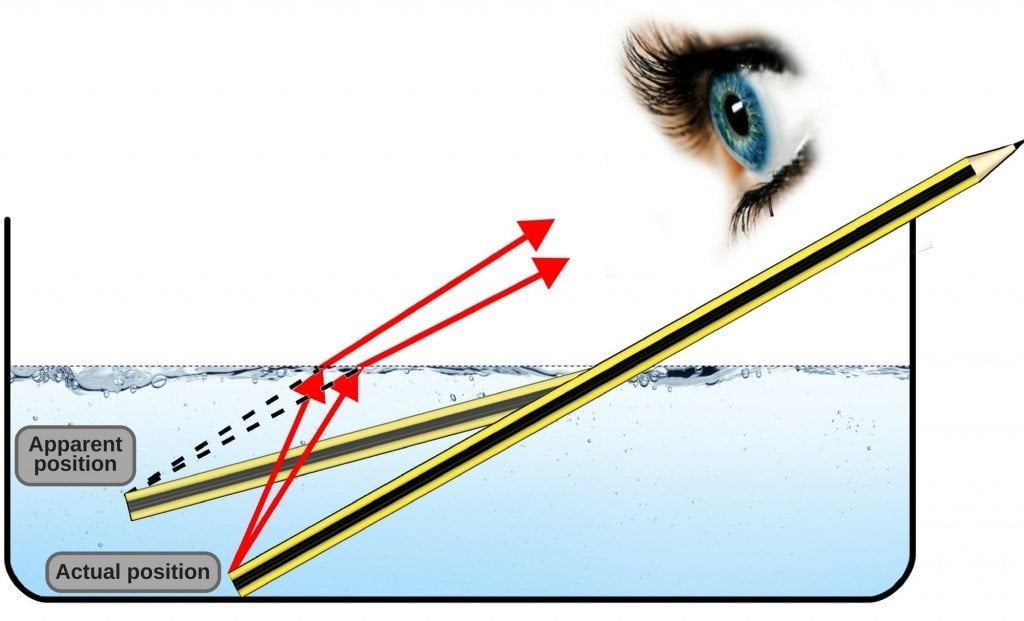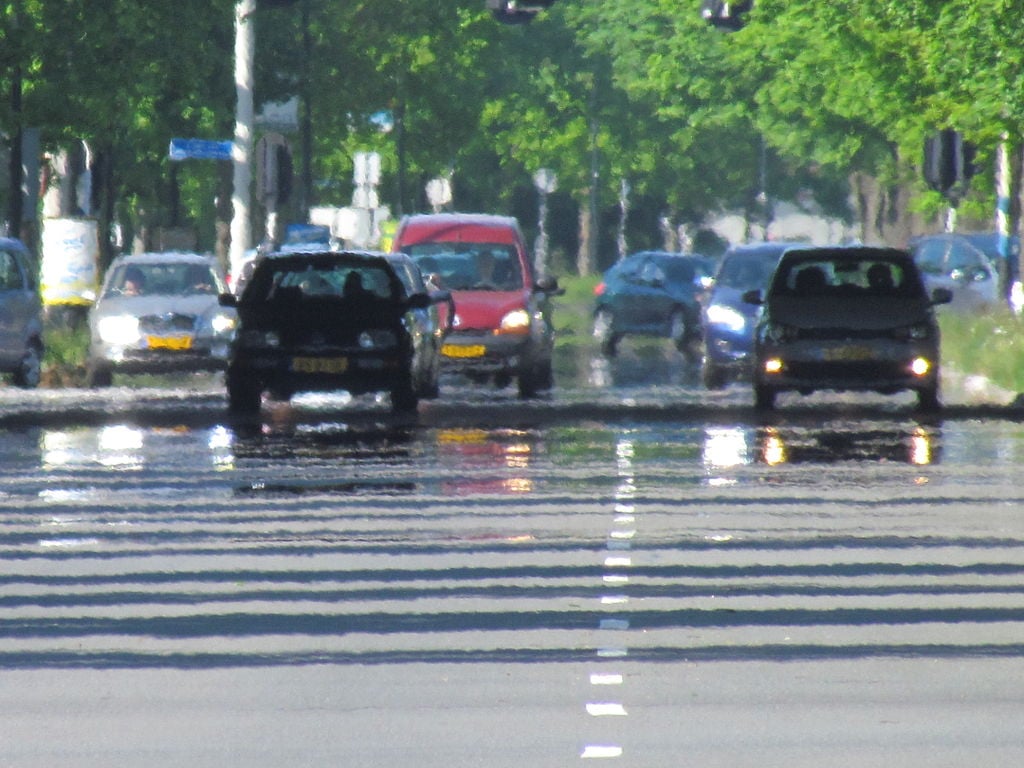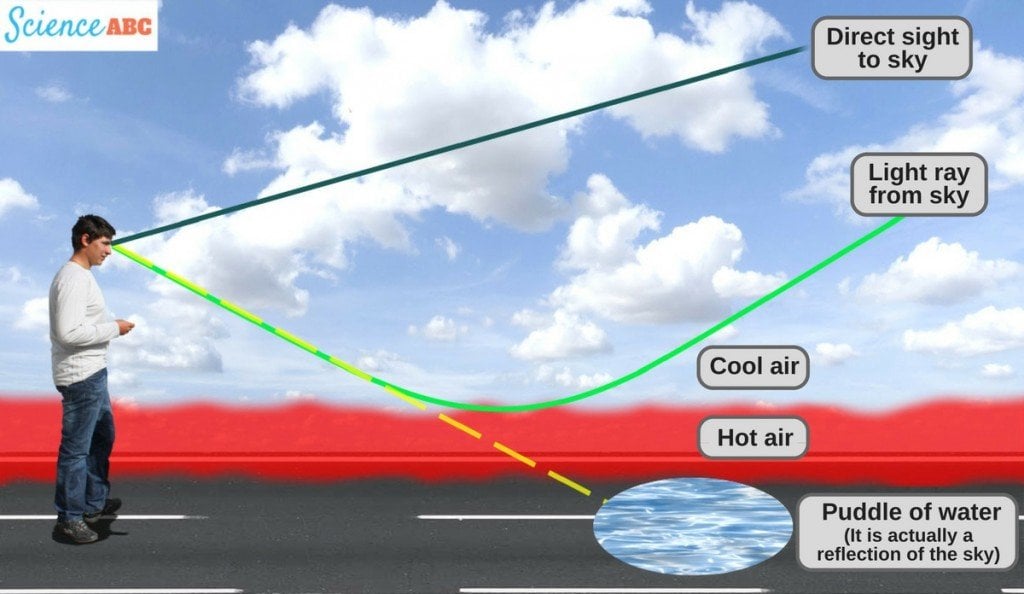Table of Contents (click to expand)
The fake puddles of water that we see on the road on a sunny day is due to an optical phenomenon called a mirage, which is caused by the refraction (or bending) of light rays due to differing temperatures of the air above the road.
While driving on a hot and sunny day, you may have been surprised to see a puddle of water a few hundred meters down the road, only to find that once you reach where the puddle was, the water is nowhere to be seen. It has moved a few hundred meters further down the road.
This continues to happen as you drive down the road.
Anyone who has ever chased such puddles of water on a hot day has learned the hard way that there is no water there. It is an optical phenomenon and acts like an illusion that confuses anyone who, on a steaming day, turns their eyes to the road in front of them.
Recommended Video for you:
How Does The Speed Of Light Change In A Dense Medium?
Light moves in a straight line at a constant speed of 300,000,000 meters per second. Its speed, however, is affected by the medium it travels through.
Light moves at this speed in a vacuum but slows somewhat when it goes from a thinner medium (air) to a denser medium (glass, water).

This apparent slowdown occurs when photons (microscopic particles that makeup ‘light’) interact with the particles of the medium they are traveling through.
As a result, they are absorbed and emitted repeatedly, which lowers the average velocity of light by a small fraction in a given medium.
The ratio by which light is slowed down in a specific medium is called the refractive index of that medium. It is a dimensionless quantity, and its value is usually greater than 1 (although it can be less than 1 too).
How Is The Refraction Of Light Related To ‘Fake Water’ On Roads?
A medium’s refractive index partly depends on its temperature. Typically, the higher the temperature of the medium, the less dense it becomes, and vice versa. This effect is more noticeable in gases.
The ‘fake water’ phenomenon is a common example of a mirage, which is why it’s also sometimes called a ‘highway mirage’.

On a hot and sunny day, the sun heats everything, including the road. However, as roads are usually black, they absorb more heat and become hotter than light-colored objects. This, in turn, raises the air temperature just above the road’s surface.
As a result, there is a pocket of warm air underneath layers of relatively cooler air. This creates an uneven medium, where the air just above the road becomes less dense than the rest of the air.
When the sun’s rays pass through the air, they move in a straight line. However, their speed increases slightly upon reaching the relatively warmer and less dense layer just above the road, causing them to change course and become refracted. This refraction allows the rays to reach the observer’s eyes.

The water on the road is not really water but a reflection of the sky. Mirages are often observed on sunny days when the sun’s sweltering heat warms flat surfaces like roads and, subsequently, the air above these roads.
Mirages can be particularly cruel, especially for thirsty travelers who desperately need water in a sprawling desert. The optical illusion generated by a mirage makes it appear as though there is a body of water nearby. The water body, or at least an image of it, seems so perfect in a mirage that it is difficult to distinguish it from an actual body of water. Thirsty travelers quickly head toward the mirage, hoping to find water, only to discover that there is no water, just another mirage a few kilometers away.
This is a cruel trick of light, heat, and optics!
Last Updated By: Ashish Tiwari













